Sketchbook exercises can help you feel more creative
Art journal exercises are a great way to help boost creativity. Whether you’re a beginner who’s just getting started or a seasoned maker, I have 24 exercises for you to play with. I’ve tried them all, and my suggestion would be to start with one that sounds like fun. If just one inspires you, my work here is done 🙂
Why art journaling?
Your private sketchbook can provide a safe and welcoming space for you to record your ideas and experiment with different artistic techniques, and art journaling is a wonderful tool for self-care and as a repository for your creative ideas.
The great thing about art journal exercises is that there’s no wrong or right way to do them. You can plan things out or be spontaneous, make pictures or write words, be messy or neat. It’s all about training yourself to show up to create, and no one but you has to see the results.
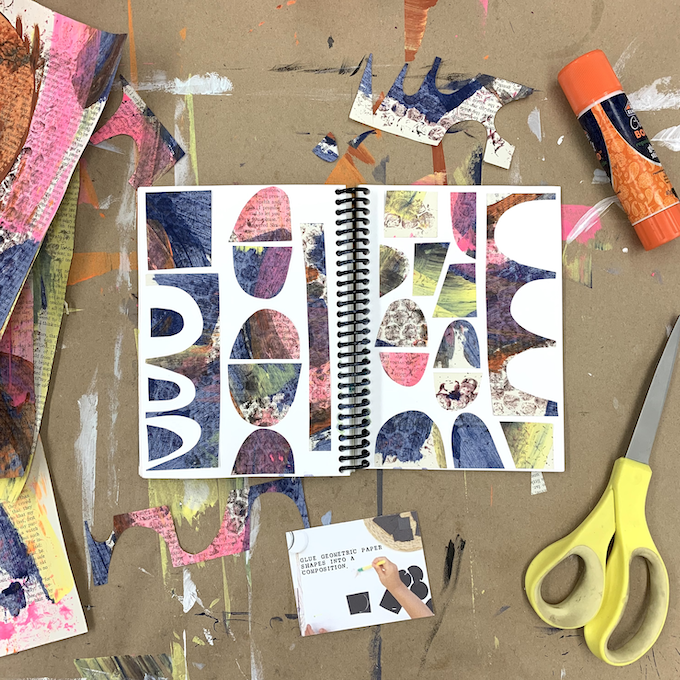
Not only will an art journal give you a place to express yourself, but it can also help improve technical skills, helping you better express your ideas. An art journal also serves as a reminder of the progress you have made over time and can give you the confidence to try new things. Keeping an art journal can help you become more creative and productive, so start one today and see what you can discover!
I’ll share one art journal exercise in detail, then give you a list of 23 more to play with.
Art Journal Exercise #1: Art journal with a theme
One way to spark creativity in a sketchbook is to give yourself a theme to work with. This theme can be anything from a color palette to subject matter such as nature, portraits, or shapes. Once you’ve chosen a theme, try to think of different ways to explore it within your sketchbook.
The example below is a collaboration between me and my daughter. We chose a simple theme of rectangles, then decided to cut pieces of colorful paper into rectangles before they were collaged with glue on the page.
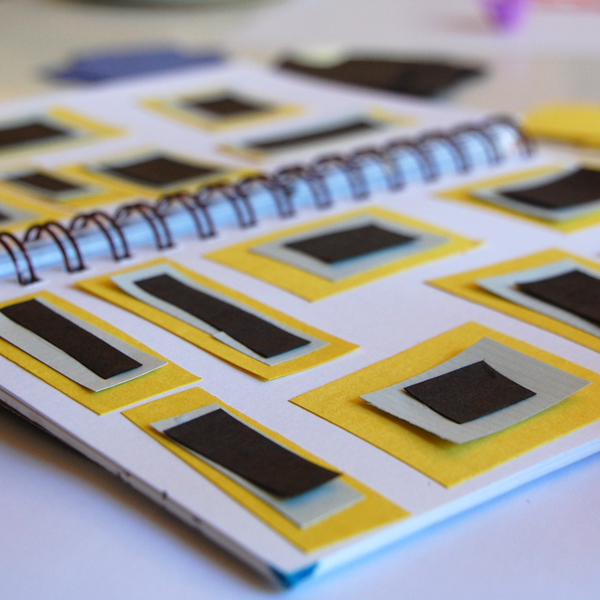
Once the rectangles were glued down, it sparked more ideas and we decided to add paint in the same color palette.
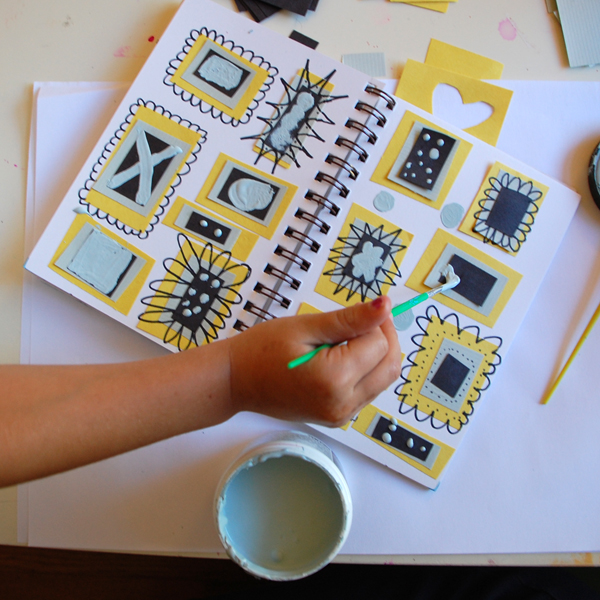
Similarly, if you choose a color palette as your theme, try experimenting with different mediums, and then use that color palette in different ways.
You could also try creating a series of sketches that are all inspired by the same theme or idea. Additionally, you could look at artwork from different artists and use it as inspiration for your own sketches.
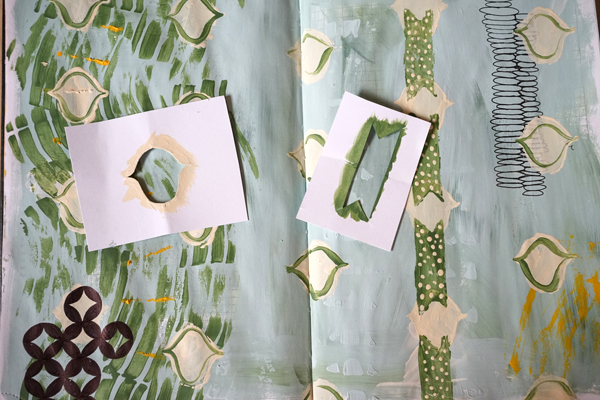
Here are 23 more art journal exercises to spark creativity in your art journal. (Stencils shown above, art journal exercise #14 in the list below):
24 Art Journal Exercises to Spark Creativity
- Art Journal with a theme: This theme can be anything from a color palette to subject matter such as nature or portraits. Once you’ve chosen a theme, try to think of different ways to explore it within your sketchbook.
- Get in touch with your inner child: Scribble, doodle, draw with your non-dominant hand, hold a marker in your mouth, finger paint, make hand prints, and don’t be afraid to make a mess.
- Repurpose old artwork or paper ephemera: Find old pieces of art, wrapping paper, or even junk mail. Cut them into new shapes, then collage these shapes on paper. Start a “Bits and Pieces” Box to collect paper for this exercise.
- Illustrate quotes: Find a favorite quote and recreate it in your journal with flourishes, color, or doodles.
- Make a list: Brainstorm a list of words, ideas, and images that come to mind when you think of a particular topic. Then create an artwork based on those words.
- Keep a daily record: Draw something each day, even if it’s just a quick sketch. You’ll be amazed at how much progress you make over time. Try our free TinkerSketch Challenge for an easy way to make quick, daily art.
- Doodle and experiment: Draw random shapes and patterns with a variety of pencils, markers, inks, and pens, then combine them to create something new.
- Explore with color: Choose a palette to work with. Acrylic paint is a great material to use for this exercise. If you’re not sure where to start, search Pinterest for palette ideas. Your palette could be vibrant, pastel, neutral, blank and white, etc. Experiment with different color combinations.
- Experiment with tape and stickers: Gather washi tape, masking tape, stickers, and other tapes to collage or paint over and around. See sticker resist with watercolor paint here.
- Play with watercolors or acrylic paint: Play with different techniques such as watery paint on wet paper, dry paint on wet paper, and wet paint on dry paper. Add salt the paint to see what happens. Experiment with different types of watercolors to compare the saturation or quality of the colors. Come up with a limited palette of three colors, and just paint with that.
- Make a self portrait: Set up a mirror and draw yourself. Challenge yourself to a limited time of 5, 10, or 15 minutes. Make it a blind contour drawing where you don’t look at your paper as you draw. The results will surprise you!
- Create a mood board: Cut out words and images from magazines, newspapers, and other sources that evoke strong emotions and feelings. Glue them onto a blank page and use it to inspire your next art journal entry.
- Draw with kids art supplies: Use crayons, oil pastels, white glue, and anything else you find in a child’s art kit.
- Outdoor listening: Carry a notebook in a bag, go outside and find a comfortable place to draw. Open a sketchbook and set up your favorite drawing tools. Now listen and look for about five minutes. What do you notice? Write or draw what comes to you. It might be birds chirping, a nearby conversation, wind, bugs flying, the texture of bark on a tree, construction noises. Document this with pictures and/or words.
- Play with stencils: Stencils are a fun, low stress way to make, especially when you’re at a loss for ideas. Paint the page with broad brushstrokes of a favorite color, then stencil over the paint with a contrasting or complementary color.
- Draw a favorite childhood memory: Choose one delightful moment from your childhood. Maybe it was picking lemons with your grandfather or singing songs with your mom. Come up with a symbol of that memory and turn it into a page in your journal.
- Focus on one thing: Choose one object or symbol and fill an entire page with drawings and doodles of it. Some ideas: circles, the first letter of your name, hearts, trees
- Journal your thoughts: Your journal could be a visual journal and a writing journal. Write down your thoughts, ideas, and feelings as a form of self-expression. This can be a great way to process your emotions, de-stress, and gain clarity. Add doodles or drawings if you’d like.
- Make a storyboard: Create an art journal page with a visual story of your day. This could be a timeline of events or a sequence of images that capture the main highlights.
- Doodle your hobbies: What are your favorite things to do? Read, bake, bike ride, hike? Make a doodle or sketch of this. You could also use photography to capture your favorite hobby, then print and collage the photo into your notebook.
- Browse Pinterest: Give yourself a short amount of time like 5 minutes to look for inspiring ideas on Pinterest. Keep it short so you’re not sucked in and then fail to create in your own visual journal! Choose one idea to riff off of, then recreate in your own journal. Don’t worry about copying. This is just for you and original ideas can later emerge from this jumping off point.
- Stamp it! Like stencils, stamps are a great way to create without a lot of pressure. Collect a few fun stamps and experiment with patterns, layer them with paint, or mask them with paper to create a partial stamp. If you don’t have stamps, here are 18 ways to make your own stamps from everyday materials.
- Listen to Music: Play a favorite song or something upbeat, slow, melancholic, quirky…whatever your heart desires. Listen to the sounds and/or the song lyrics, and let your imagination run wild as you draw whatever comes to mind. Spotify is a good spot to find free music.
- Try stream of consciousness writing: Start writing and don’t stop until you’ve written a full page. This is a great way to uncover hidden thoughts and ideas that you might not have realized. Now that you’ve written these ideas down, what images do the words evoke?
Whatever you choose to do, the key is to stay creative and have fun!


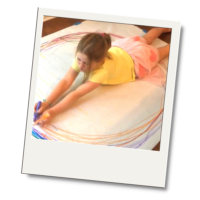
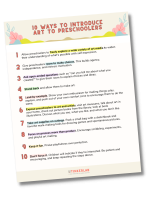
Hello guys! Thanks for the info that you posted here, it could be very interesting for anyone looking for this! But I am sure for 99% that with the help of this online super professional writing company any form of assignments feels much easier than ever before. If I get a task, that I have not done before, I know that students have writing help in that. Regular discounts make our cooperation so much better than with any other online writing agencies in the whole planet!!